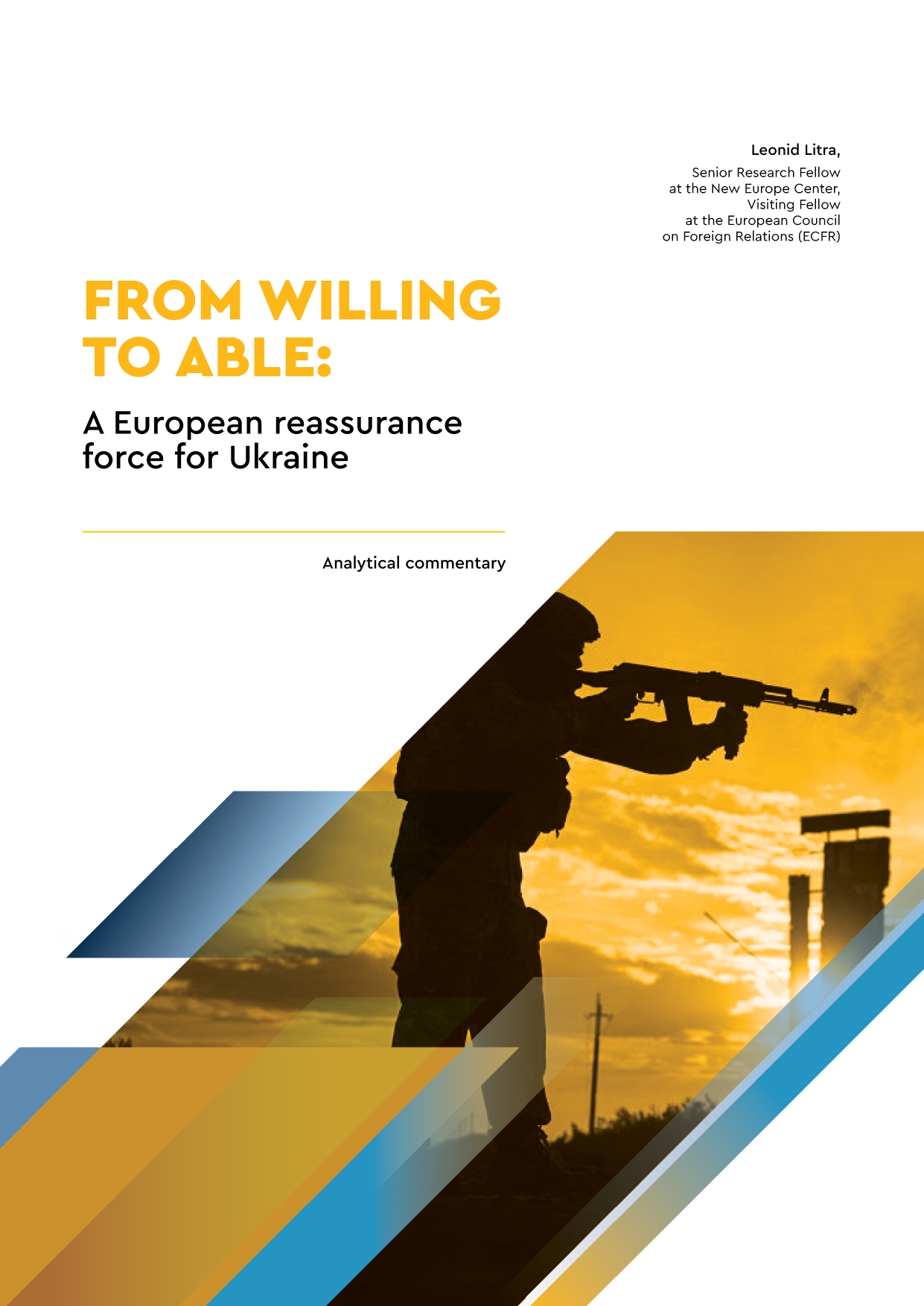
Author: Leonid Litra, Senior Research Fellow at the New Europe Center and Visiting Fellow at the European Council on Foreign Relations (ECFR).
European boots on the ground in Ukraine seem more likely than ever before—but discussions on the practicalities of such a “reassurance force” are only just starting.
On April 21st, a senior US official told the New York Post that President Donald Trump’s peace deal for Ukraine may include deploying European forces in the country. “The hard part”, the official said, “is what does a security force look like”? These remarks came as a Ukrainian delegation headed to London for talks with Britain, France and the United States on April 23rd (which were downgraded at the last minute after US secretary of state Marco Rubio dropped out). In a press conference after a meeting in Paris the week before, the Ukrainian president Volodymyr Zelensky had also set out questions about the practicalities of such a force: what structure would it take, for example? Who would be involved? When and where would the contingent be deployed?
These operational challenges relate as much to Europe’s capacity to deploy without US support as they do to deterring Russia. Ukraine and its allies need to overcome these challenges both to prevent a future war and to end the current one. NATO membership remains Ukraine’s most credible, cost-effective and long-term security solution. But that seems a long way off. In the interim, the European force—alongside Ukraine’s own military and security apparatus—would help ensure Russia respected any ceasefire agreement. Indeed, Ukrainians are unlikely to accept a deal without such reassurance; and even if they did, the resulting “peace” would amount to little more than rhetoric.
The practicalities of peace
With the political “why” settled, Ukraine and its allies should now turn to the “what”, “who” and “where”. The answers to these three questions would then create the foundations for discussions on when the force could reasonably deploy and what the rules of engagement might be.
1. What structure might the mission take?
It is early days, but it is already clear that the deployment has to be a reassurance or deterrence mission and not a peacekeeping operation. Unlike Ukraine, Russia is a permanent member of the UN Security Council and can veto any decision the council makes. Russia is also the aggressor in this war. The deployment of peacekeepers through the UN would thus call into question the feasibility and legitimacy of the entire mission.
Accordingly, Russian leaders have been quite vocal in their opposition to a reassurance force in Ukraine, insisting that any foreign deployment needs their acquiescence. And yet, they have not offered any explanation as to why Russia did not seek international approval when it involved North Korean soldiers in the war or transferred tactical nukes to Belarus. In March the French president Emmanuel Macron dismissed Russia’s demands, given any force with Russian consent would not serve the goal of preserving peace.
2. Who would be involved?
To be credible, the reassurance mission should involve as many countries as possible and a significant number of troops. The contingent will likely be made up of personnel from European countries together with Canada and Australia. These states are all unequivocal allies of Ukraine and not neutral countries that may be less invested in the country’s defence. In January, Zelensky floated the idea that Ukraine would need 200,000 foreign troops (100,000 on a rotation basis) to enforce a peace deal. The current debates involve far smaller numbers (usually around 10,000-30,000 to begin with). But this does not undermine the rationale of the mission: the US mission in Vietnam started with 900 American instructors; the International Security Assistance Force mission in Afghanistan with 5,000 troops.
But a US “backstop” to deter Russian attacks on the European force seems to be a condition for some of Ukraine’s European allies to participate in the mission. The US has military capabilities such as in air defence, and intelligence, surveillance and reconnaissance (ISR) that remain underdeveloped in European forces. The US official quoted in the New York Post indicated that financial support for the European force could be forthcoming, but that American troops will not. If US backing for the mission is merely monetary, with no personnel or materiel components, the coalition will have to focus the US funding on areas such as ISR that take longer to develop.
If the US backstop is absent entirely, the participating countries will need to tailor the current capacities of their armies to those of Ukraine’s and “make do” as they work to see the benefits of their increased defence spending over the coming years. But even if a more comprehensive backstop is forthcoming, European militaries should still develop their capacities. It is far wiser and less costly to support Ukraine now than to fight another war in Europe.
3. Where should the mission deploy?
Europeans initially discussed the mission as primarily land-based, but the concept has since evolved into a multi-domain operation on land, in the air and at sea. This kind of mission would enable an integrated approach for Ukraine that built on the land forces with air patrols and maritime deterrence. A multi-domain operation would also improve interoperability between Ukrainian and Western forces—a key goal for any aspiring NATO member.
In addition, the reassurance mission needs to contribute to Europe’s overall deterrence strategy against Russia. If the reassurance force deployed near the Polish and Romanian borders (in Chernivtsi, say, and west of Lviv), this would not best serve Ukraine’s or the rest of Europe’s strategic needs. Forces will need to be positioned closer to the front line. Then, however small it was at first, the force could help prevent attacks on the Odessa region, deter aggression from Belarusian territory, safeguard Kyiv and Dnipro, and protect Ukraine’s critical infrastructure—including its energy facilities. This would stop Russia from returning to its goals in Ukraine and discourage any aggression elsewhere.
The mutual interest
In short, plans for a European reassurance coalition should take into account the needs of Ukraine and the rest of Europe, as well as the extent to which the mission can prevent a new war. There is no guarantee of a US backstop, but without robust security guarantees, a lasting peace in Ukraine seems unattainable. Europeans need to work quickly to evolve from being “willing” to “able” to act independently. If they do not, instability in Ukraine could create new opportunities for Russian aggression in Europe.
PDF-version is available here.
Ananytical commentary was first published by ECFR on April 23, 2025.
Translation into Ukrainian, design, and layout of the publication were prepared with the support of the International
Renaissance Foundation.







